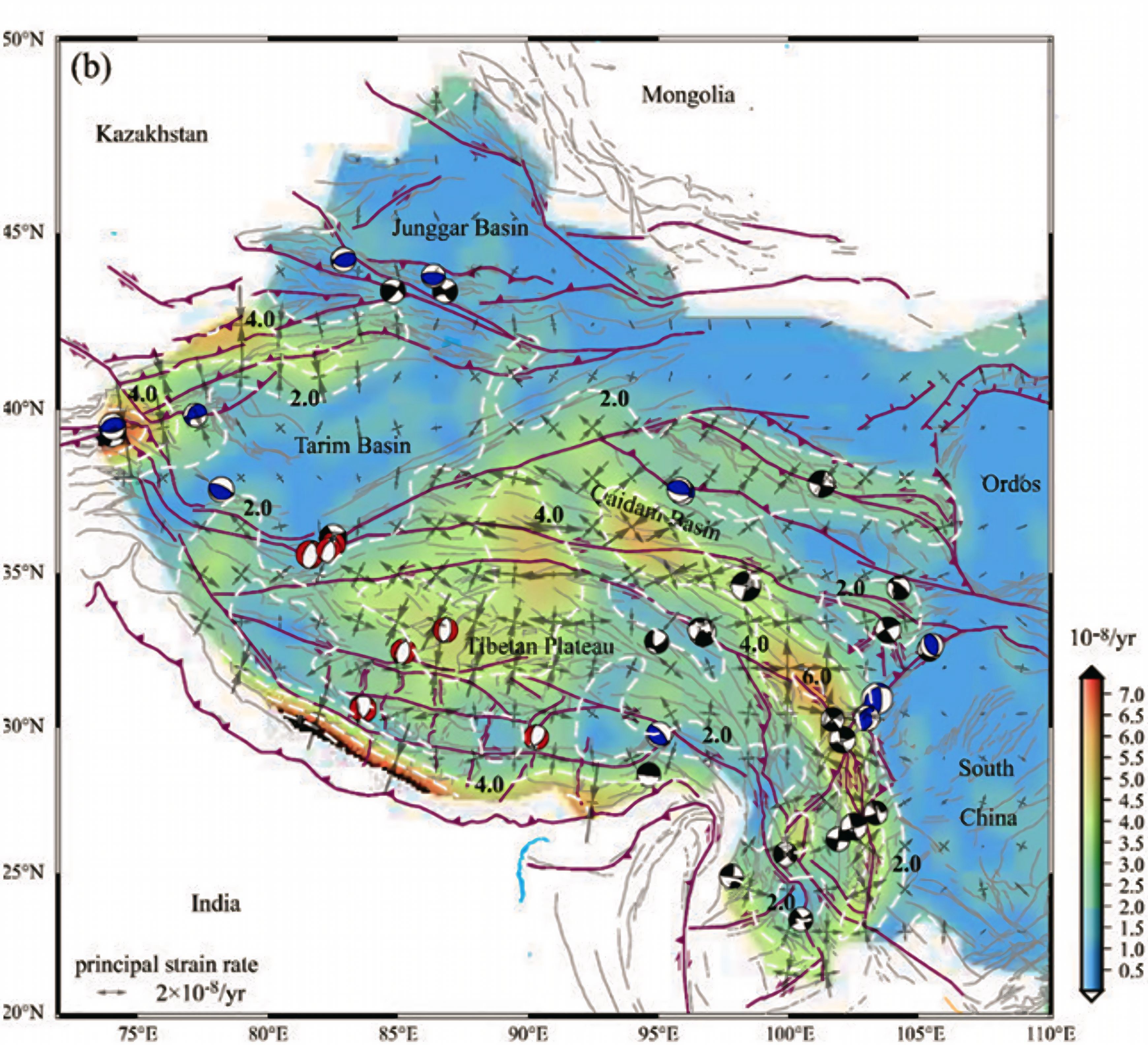Strain accumulation is believed to be closely related to the occurrence of strong earthquakes.
To investigate the pre-seismic deformation status of strong earthquakes, the correlations between the GNSS (Global Navigation Satellite System) strain rates and earthquakes occurring during the GNSS observation period in the region of Western China and neighboring Central Asian countries were studied. The primary results show that a large part of Mw ≥ 6.0 earthquakes occurred in the medium and low value regions of the second invariant of strain ratevalues (SR). We found that about 81% of strike-slip earthquakes occurred in the areas of medium and low shear strain rate, and the ratios are 72% and 100% for the reverse-faulting and normal-faulting earthquakes occur in the areas of principal compressive and tensile strain rates, respectively. Thus, no strong corrections between pre-seismic deformation and the Mw ≥ 6.0 earthquakes occurrence are found. The sustained slow fault slip rates, complex faults interaction at different stages of inter-seismic period, and historical earthquakes, may possibly cause the typical strain rate patterns during the pre-seismic stage. Therefore, Mw ≥ 6.0 earthquakes occur in the medium and low value of the second invariant of strain rate values of strain rates, and, thus, the low strain rate is not an indicative of low-potential of strong earthquakes.

Источник: Wu Y., Chen Ch., Jiang Z, Li J., Rodkin M.V., Gitis V.G., Pang Y., Li Y. // Are strain rate lows proxies of low-potential of strong earthquakes? A case study in Western China // Tectonophysics. 2025. V. 895. Article 230576. DOI:10.1016/j.tecto.2024.230576

